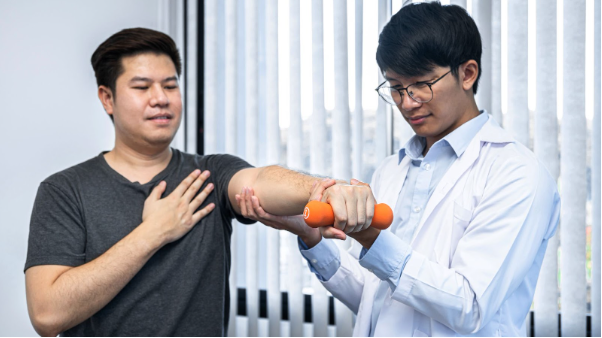Whether you’re a professional athlete or a weekend warrior, intense workouts often lead to muscle soreness. Post-exercise recovery is not just about resting—it’s about actively supporting your body’s healing process. When muscle soreness becomes severe, it can hinder future performance and even lead to injury if ignored. Understanding how to manage and treat this discomfort is essential for long-term fitness and health.
Understanding Post-Workout Muscle Soreness
What Causes Muscle Pain After Exercise?
Delayed Onset Muscle Soreness (DOMS) is a common phenomenon that occurs 12 to 48 hours after intense physical activity. It results from microscopic damage to muscle fibers during exercise, especially during eccentric movements like downhill running or weightlifting. The body responds with inflammation and mild swelling, which causes the pain and stiffness we associate with sore muscles.
Signs Your Muscles Need More Than Just Rest
While mild soreness is normal and even expected, some cases of muscle pain are more serious. If you experience intense stiffness, limited range of motion, or pain that doesn’t improve after 72 hours, it’s time to consider alternative recovery methods. Persistent muscle tension can lead to joint stress, compensation injuries, and long-term damage if untreated.
Why Massage Therapy Helps in Muscle Recovery
Physical Benefits of Massage
Massage improves circulation, helping oxygen and nutrients reach damaged muscle tissue. This speeds up the recovery process by flushing out toxins like lactic acid and promoting cellular repair. A good massage can also relieve spasms and knots that form in tight muscles, restoring flexibility and comfort.
Massage vs. Other Recovery Methods
- Ice baths: Reduce inflammation but don’t promote circulation like massage does.
- Foam rolling: Effective for light recovery but may not reach deeper muscle tissues.
- Stretching: Maintains flexibility but doesn’t repair damage.
Massage stands out as a comprehensive solution, addressing both muscular tension and the underlying causes of soreness.
Psychological Relief Through Touch
Muscle pain isn’t just physical. It can also contribute to mental fatigue, irritability, and reduced motivation. Massage helps reduce cortisol levels and boosts endorphins, creating a sense of relaxation and mental clarity. When your body and mind are in sync, recovery is more efficient and less stressful.
Types of Massage Ideal for Post-Workout Recovery
Sports Massage
Designed specifically for athletes, sports massage focuses on muscle groups that are overused and stressed from repetitive activity. It includes techniques like deep tissue pressure, stretching, and trigger point therapy to reduce muscle tightness and improve mobility.
Swedish Massage
This gentle approach uses long, flowing strokes to promote relaxation and circulation. Ideal for light soreness or those new to massage, Swedish techniques can ease surface tension and reduce emotional stress after exercise.
Deep Tissue Massage
For those dealing with chronic tightness or deep muscle pain, deep tissue massage targets the deeper layers of muscle and fascia. Though more intense, it’s extremely effective in breaking down adhesions and releasing long-term tension.
Trigger Point Therapy
This method focuses on specific tight spots within the muscle that cause referred pain. By applying direct pressure to these points, therapists can release knots and restore normal function to the affected area.
How to Incorporate Massage Into Your Fitness Routine
Post-Workout Protocols
Scheduling a massage within 24 to 48 hours after an intense workout can dramatically reduce soreness and speed up recovery. Even a short 30-minute session focused on key muscle groups can be beneficial.
Consistency Is Key
Regular massages, once or twice a month, can prevent injuries and improve overall performance. Athletes often include massages as a fixed part of their training calendar, especially during periods of high physical demand.
When to Avoid Massage
Massage is generally safe, but should be avoided if you have open wounds, severe inflammation, or are recovering from recent surgery. Always consult a physician if you are unsure whether massage is appropriate for your condition.
Finding the Right Massage Service
Not all massage services are created equal. It’s essential to find a licensed and experienced therapist who understands sports physiology and muscle mechanics. In some regions, professional services that combine therapeutic benefits with convenience—such as 오피 establishments—are preferred by fitness enthusiasts who seek quick, tailored sessions without lengthy appointments.
Conclusion: Prioritize Recovery to Maximize Results
Exercise is only half the equation when it comes to building a stronger, healthier body. Recovery plays an equally vital role, and massage is one of the most effective tools available. Whether you’re struggling with post-leg-day soreness or general fatigue, integrating massage into your routine can help you recover faster, feel better, and perform at your best.











